The gardens at Dunvegan Castle: Hard landscaping on the Isle of Skye
Despite their exposed position, the gardens of Dunvegan Castle, home of Clan MacLeod for 800 years, have nurtured an important historic collection of species from around the world and are now going from strength to strength, writes Caroline Donald.
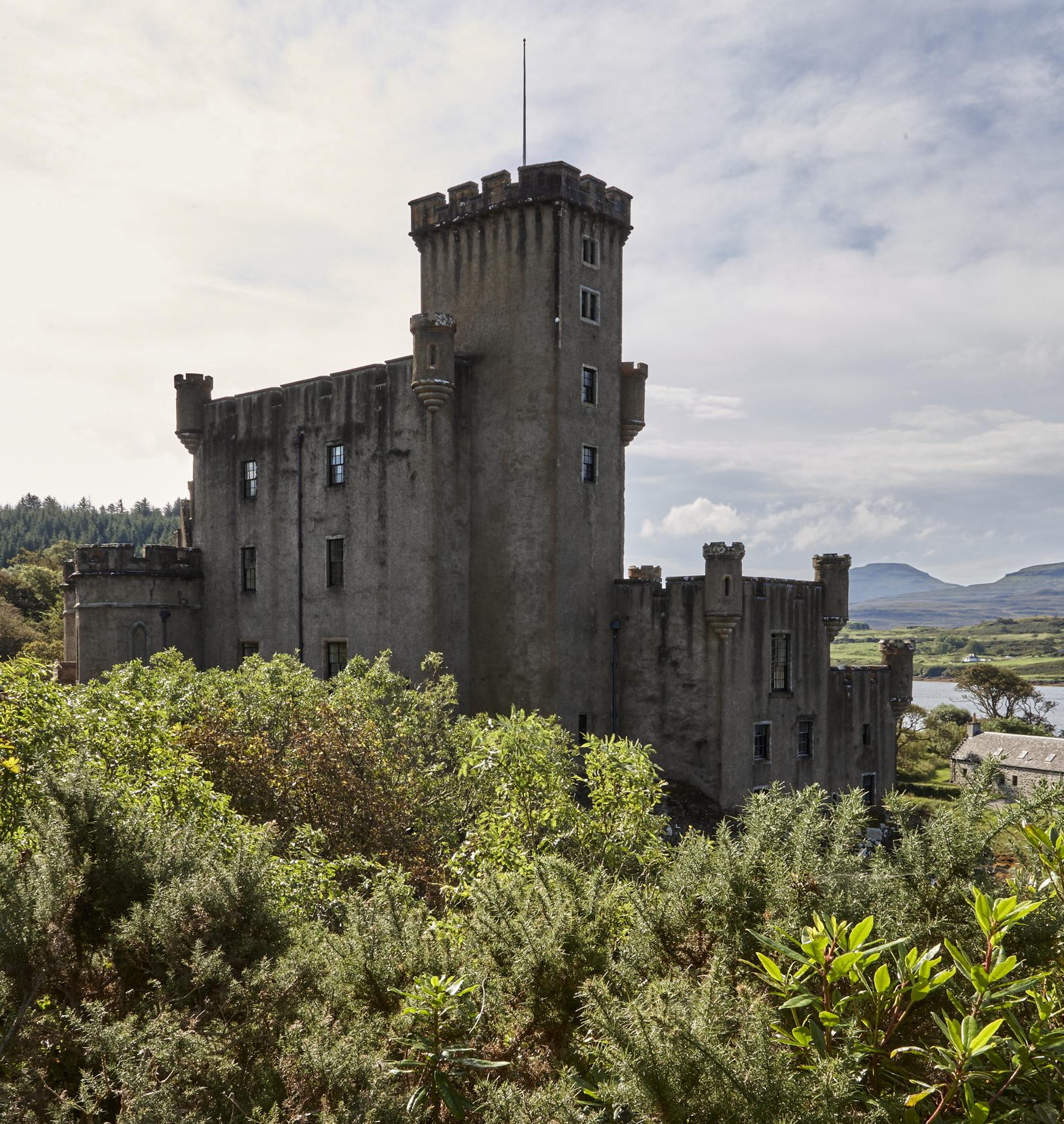
One might remark that the somewhat dour-looking Dunvegan Castle, parts of which date back to the 13th century, is at the back of beyond; however, this is not in condemnation, but admiration. Perched on a rocky promontory overlooking Loch Dunvegan in the north-west of Skye — itself the topmost of the Inner Hebrides — there’s really not much further you can go west, save for North Uist, before you hit the great Atlantic Ocean.
The journey from the ferry or bridge connecting to mainland Scotland enforces this sense of isolation, before one travels through an almost lunar landscape, grazed over the centuries by sheep introduced from the Lowlands. Although it possesses a raw beauty, for those in search of horticultural delight there is little of promise.
All the more surprising, then, to discover at Dunvegan plant species from all over the world in a five-acre jewel box of delights so impressive that the garden was named a Royal Horticultural Society Partner Garden in 2022. It is also one in the eye for James Boswell, who noted in agreement with the Dowager Lady MacLeod on his visit with Samuel Johnson, 250 years ago, that, ‘the situation of Dunvegan be such that little can be done here in gardening, or pleasure-ground’.
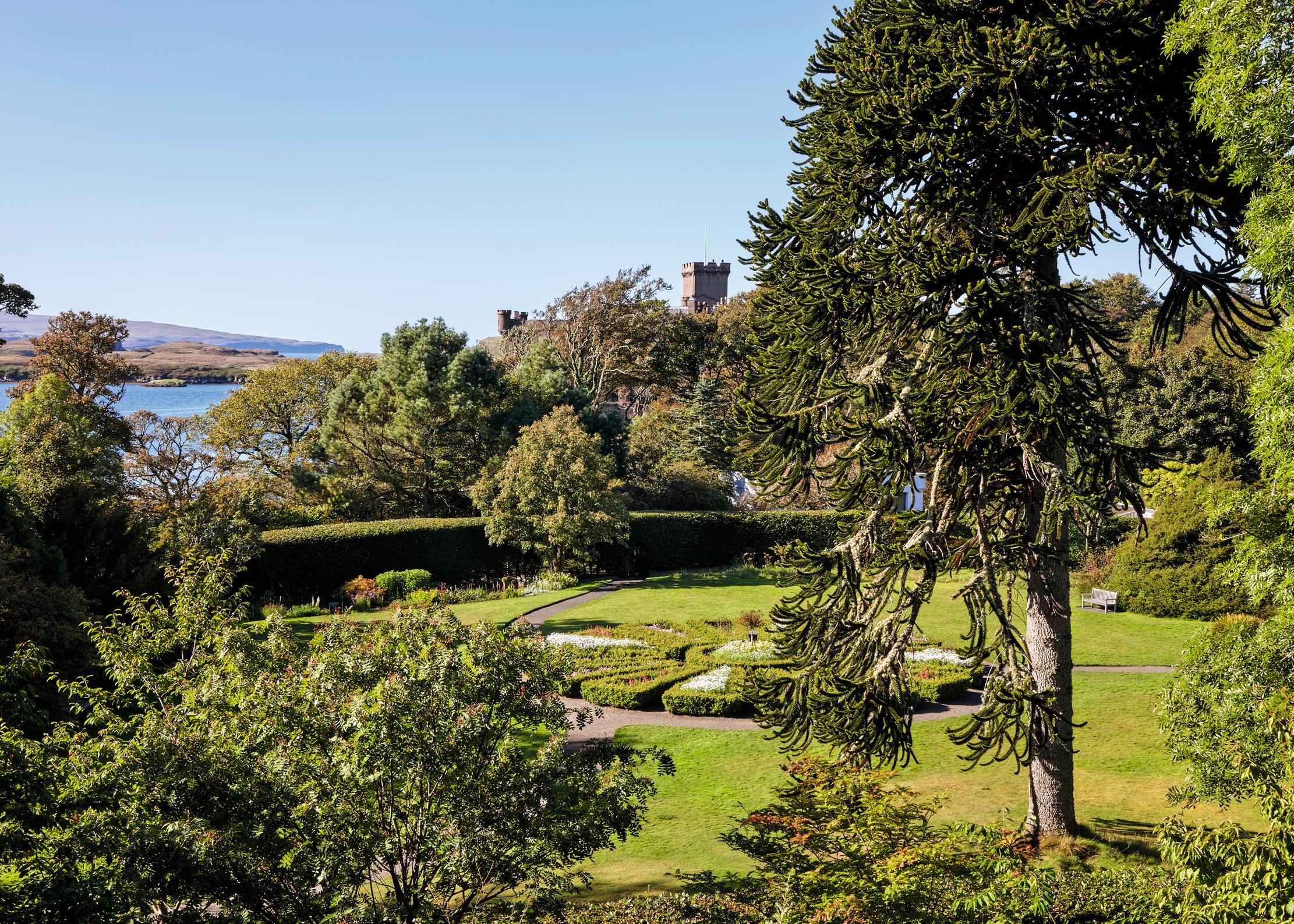
How wrong they were, as none of the party assembled at the castle in 1773 was to know of the cosseting effects that a shelterbelt of trees started by the dowager’s son Norman, 23rd Chief, and a walled garden erected by her grandson, John Norman, 24th Chief, would produce, nor of the future international trade in exotic trees and shrubs from temperate far corners of the world, bringing many fine species to Dunvegan over successive generations. Among these are azaleas from north-western North America; a Korean fir, Abies koreana, its upright cones much photographed by a path in the Water Garden, metasequoia from Sichuan and a Chilean fire bush Embothrium coccineum, which lights up the Spring Bank with its dramatic display of scarlet flowers. Meanwhile, shrubs such as olearia and griselinia represent New Zealand and Tasmania.
There are also rhododendrons from a wide range of Himalayan regions that do well here, such as R. cinnabarinum, R nigroglandulosum and R. vaseyi — and sometimes too well, historically, in the case of the R. ponticum, which, although an excellent windbreak in earlier days, is being cleared as it has become a pernicious weed and is harbouring phytophthora. It is gradually being replaced by the likes of beech, western redwoods, alders, aspen and Scots pine, together with hawthorn and blackthorn and an understorey of olearia, escallonia and elaeagnus.
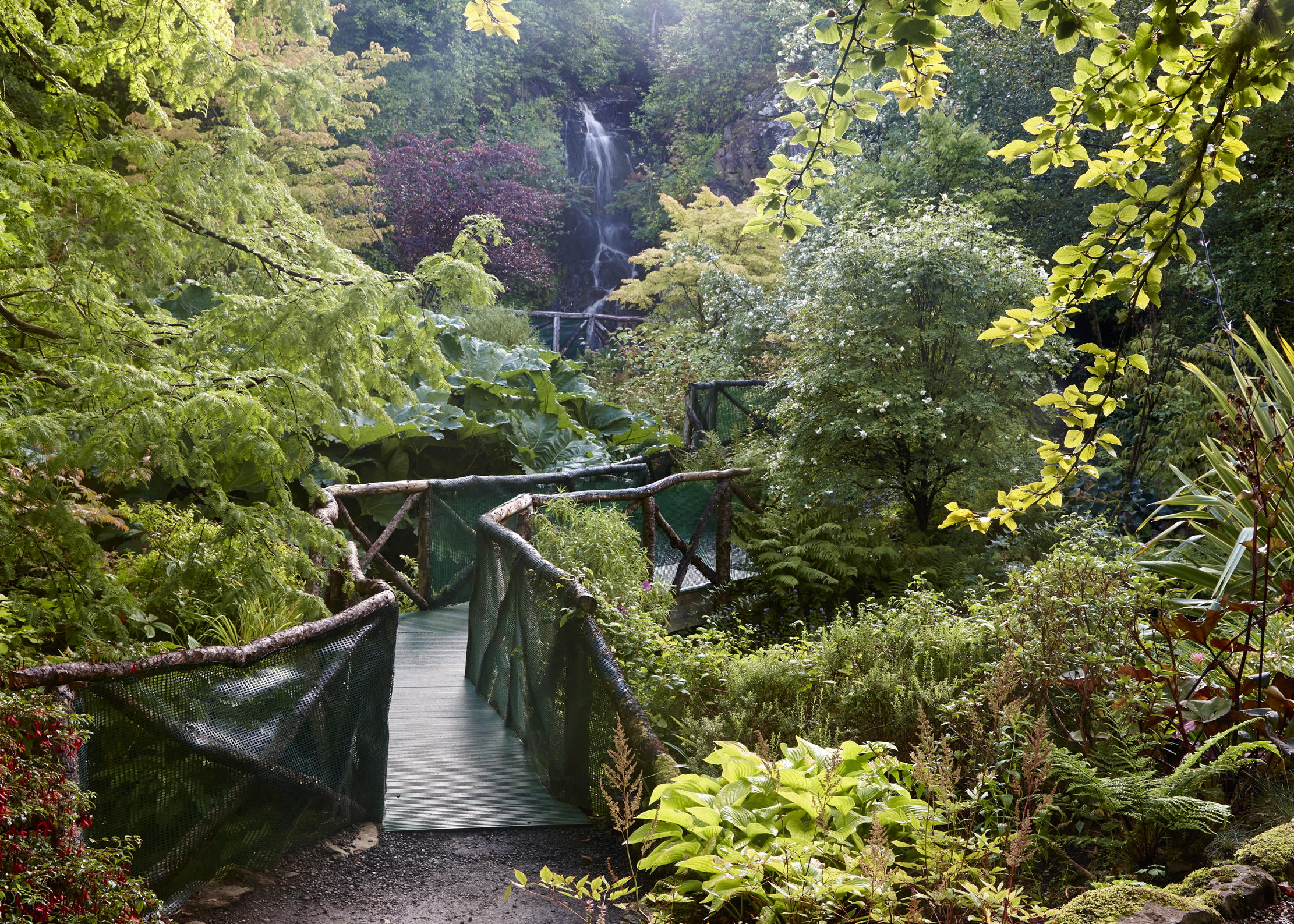
This is an example of the efforts to improve the castle and gardens by the present Chief, Hugh MacLeod. He inherited the 41,000-acre estate in 2007 from his father John, the 29th Chief, who had himself been responsible for many additions and improvements during his 30-year tenure, although in latter years, his eye had been off the Skye ball, as he concentrated on clan matters.
‘The only advice I got about running the estate was when he was in hospital and he said “Good luck with Dunvegan”,’ says Mr MacLeod, a producer and director in another life. ‘That was my full training and I had to learn on the job.’
Exquisite houses, the beauty of Nature, and how to get the most from your life, straight to your inbox.
Mr MacLeod has risen to the challenge with gusto. Not only has he put a new roof on the castle, he has been updating planting and design in the grounds for Dunvegan’s 170,000 annual visitors. Sometimes, a simple, commonsense solution has made a big difference. A gloomy ponticum tunnel — once the entrance to the formal gardens — had been so underwhelming that visitors sometimes followed the route to the lavatories instead. Now, the area has been opened up and the ponticum has been replaced by beech hedges, which offer a view of the gardens beyond that leaves visitors in no doubt as to which way to head.
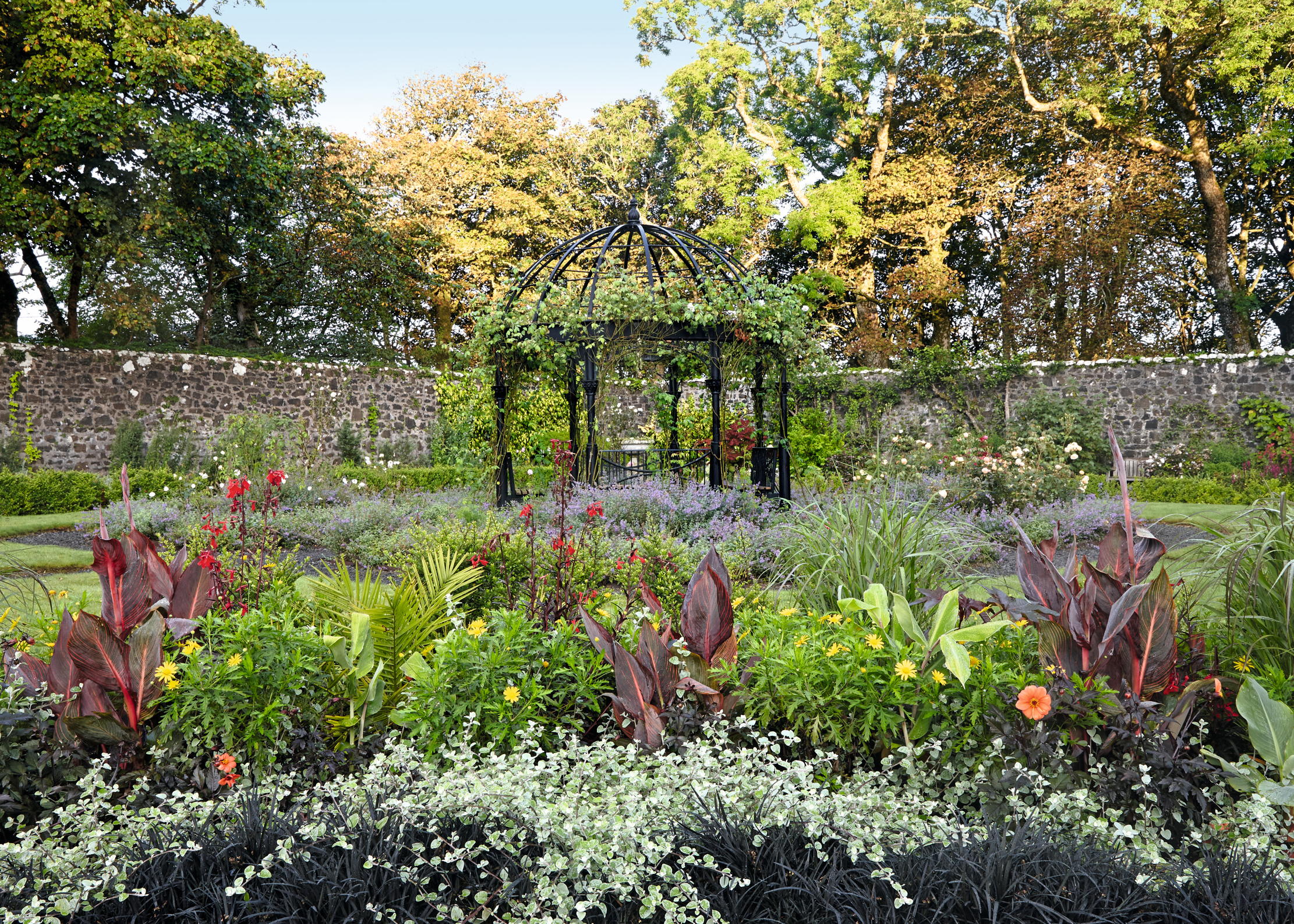
Skye may benefit from its mild winter temperatures — they rarely drop below 3˚C, although the winter before last was an exception, with more than two weeks of frost and snow — but, with an annual rainfall of 80in and regular storm-force winds, people are always surprised when they come into the garden and see it is so green and that there are so many trees. ‘It is like an oasis here,’ says Úna Treanor, the Co Monaghan-born head gardener who has been at Dunvegan since 2017, by way of the Royal Botanic Gardens, Edinburgh, and Haddo House in Aberdeenshire. ‘They always say that if you want to start a garden on Skye, throw away all your gardening books and start again. It is true; I have been here for seven years and am only just getting to know what works.’
Miss Treanor was lucky to inherit much that was already well established, most notably by the previous head gardener, David Maclean, who worked closely with the 29th Chief to restore and develop the Water Garden and the historic formal parterre. These days, she and Mr MacLeod are planting to cope with the long-term effects of climate change — more severe storms, hotter summers, more disease — and to further improve the garden’s resilience by improving the soil and introducing hundreds more specimen trees and shrubs. They are also bolstering wildlife-friendly practices, such as leaving grassy banks untrimmed and perennials uncut until February.
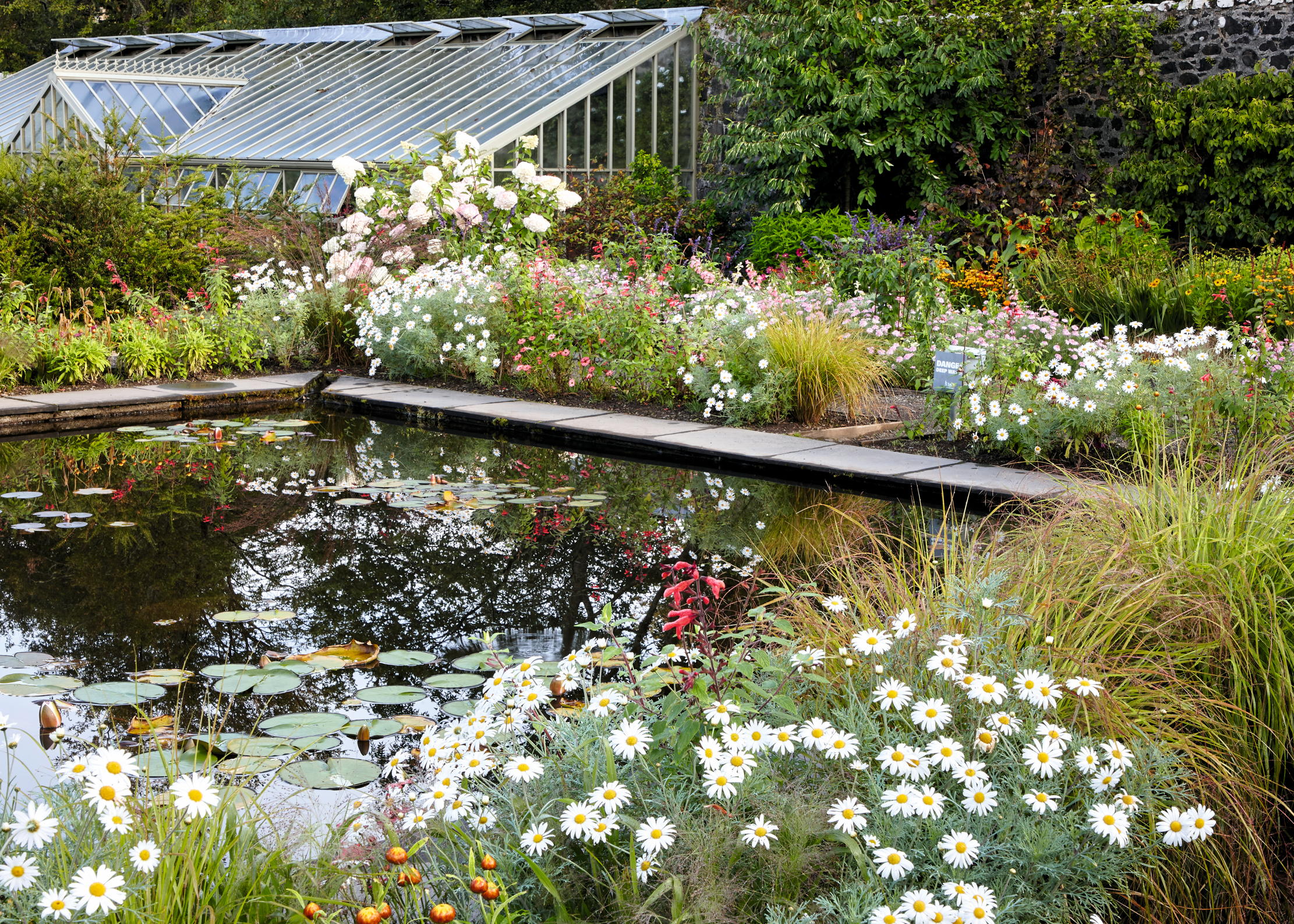
Although he would not claim to be a plants-man, Mr MacLeod’s work in film and television has given him a keen eye for design and visual detail, as if seeing everything through a camera lens, from redirecting paths so that visitors can appreciate Instagram-friendly vistas down to the tiniest garden notice. ‘Hugh is very interested,’ says Miss Treanor. ‘He has learnt a lot, always asks questions and wants to know what plants are.’
It is in the former kitchen garden that their work is most apparent, editing out haphazard additions to create a clear overall design, based on a cruciform layout. Formerly, visitors would come through the gate to be greeted by a yew hedge, which blocked the view of the garden, and an underwhelming gravel bed; the hedge has been removed and the gravel replaced by a long herbaceous border. ‘Now, when you come into the walled garden, there is a massive reveal, a big punch,’ says Mr MacLeod.
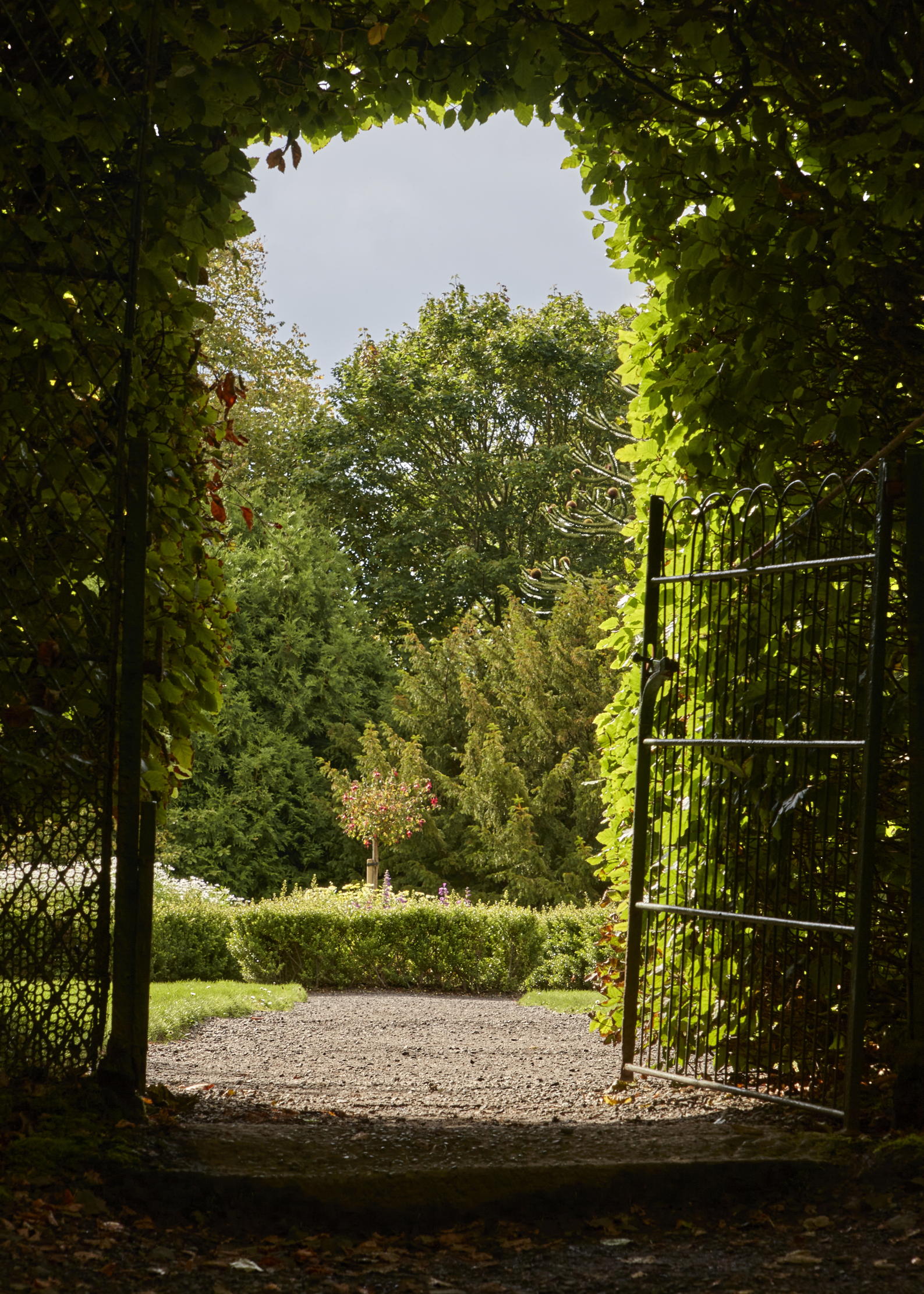
Miss Treanor has created several long, colour-themed herbaceous beds and there is also a cherry avenue, a vegetable area (with a museum in a former shed to honour the garden’s original function), a huge Alitex glasshouse, formal pond and a play area around the Dunvegan Pebble — a 2¾-ton Carrera marble sculpture by David Worthington, which children can spin on its axis. Along the back wall is a border of ‘plants with a purpose’ of which she is especially proud, having studied ethno-botany. It includes traditional varieties that might have been here originally for medicines, dyes, culinary purposes and to deter pests.
For all his innovations, Mr MacLeod appreciates that he has inherited an estate with a long history and a place in the hearts of those who have known it over the years, but no garden stands still. ‘The whole design rationale is to be sympathetic and in keeping with a garden of this quality. We want to exceed the demanding horticultural expectations of our visitors.’ He’s well set on the high road to doing so.
Visit www.dunvegancastle.com to find out more and plan a visit.
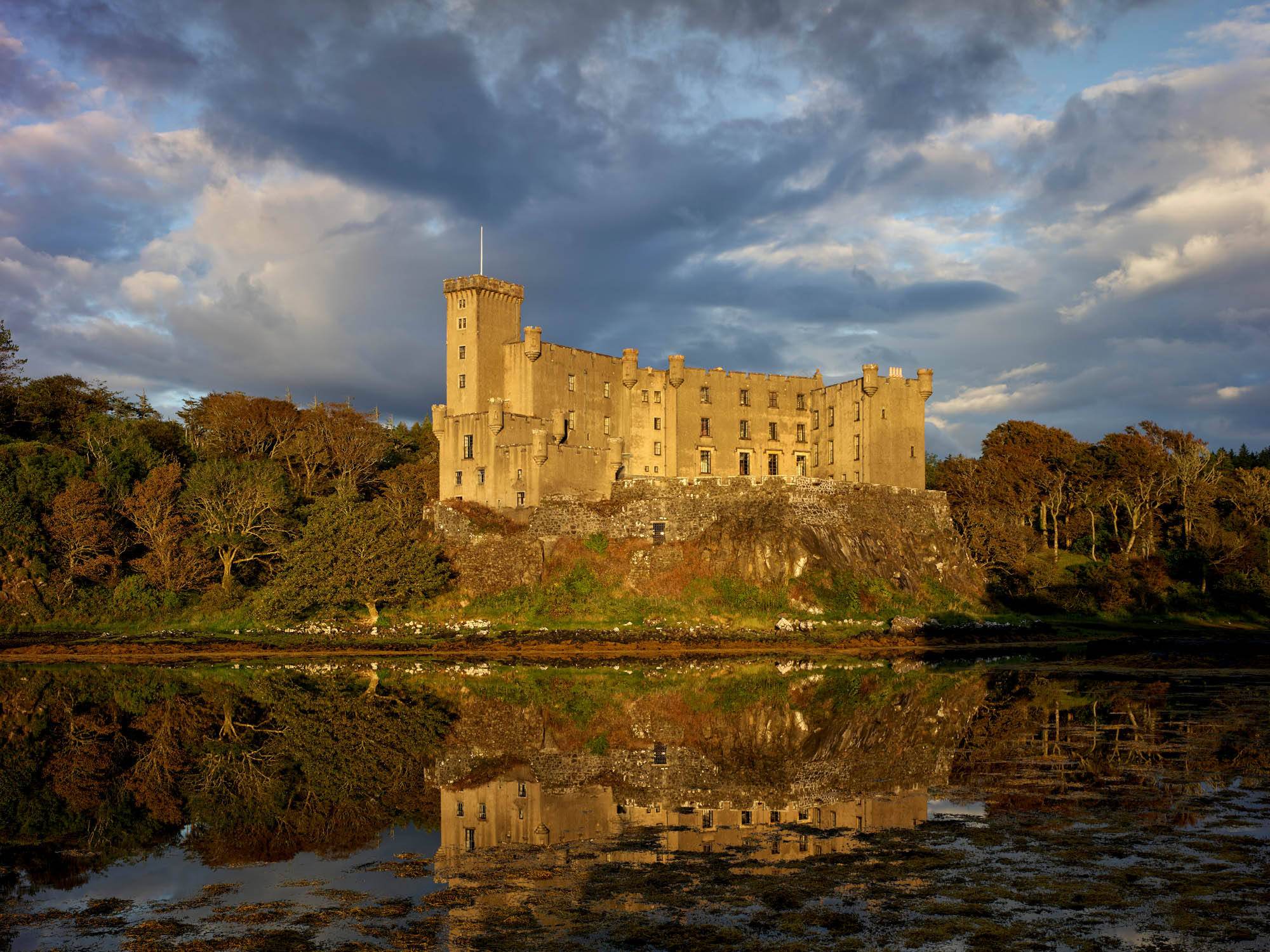
'The ideal of a Scottish castle': 800 years of Dunvegan Castle, one of Scotland's great fortresses
One of Scotland’s most celebrated and anciently occupied castles has undergone a decade of restoration and renovation. John Goodall reports,
Six of the most beautiful waterfalls in Britain, from Devon to the Isle of Skye
Surging, foaming, trickling, crashing, cascading or flowing, waterfalls paint the landscape with rainbow-scattered spray and misty plumes. Here, we celebrate
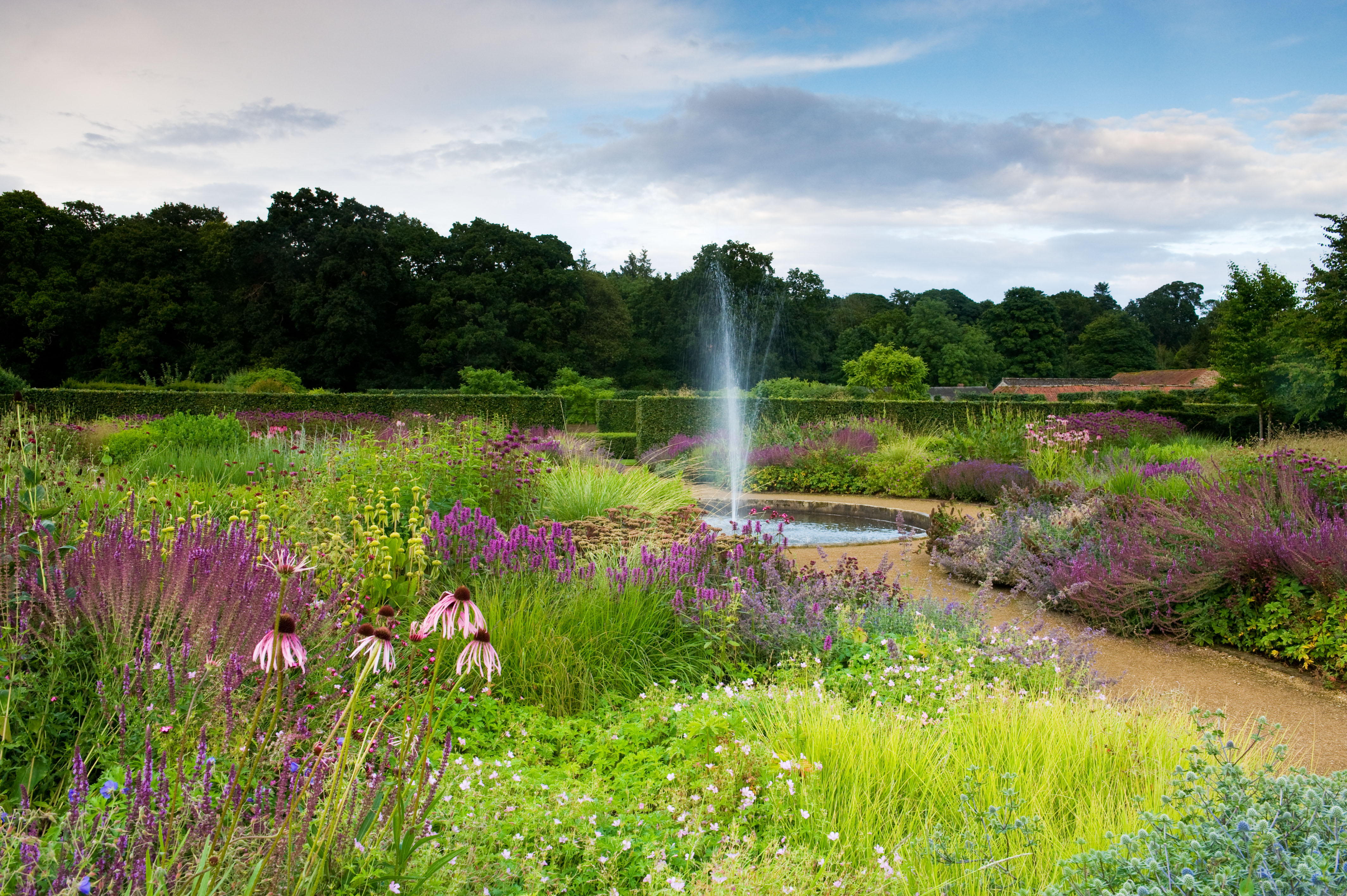
The six spectacular gardens battling out for Britain's 'Garden of the Year'
Six beautiful gardens from around the country are battling it out to be crowned the Historic Houses (HH) Garden of
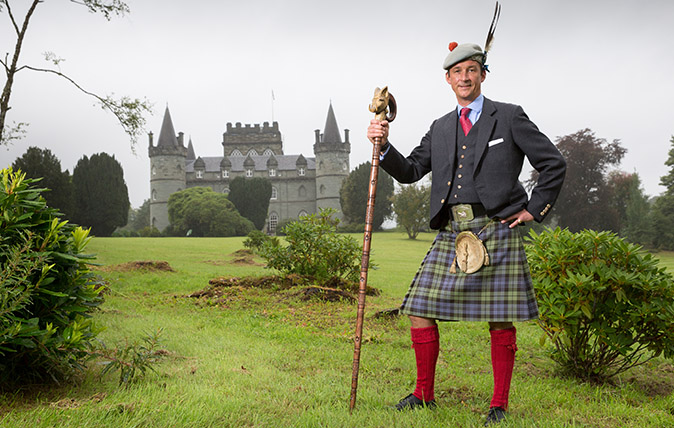
The life of a 21st century Highland clan chief, from managing 60,000 acres to manning the tills at the gift shop
Their family histories are full of heads on spikes and villages being razed to the ground, but modern Highland clan